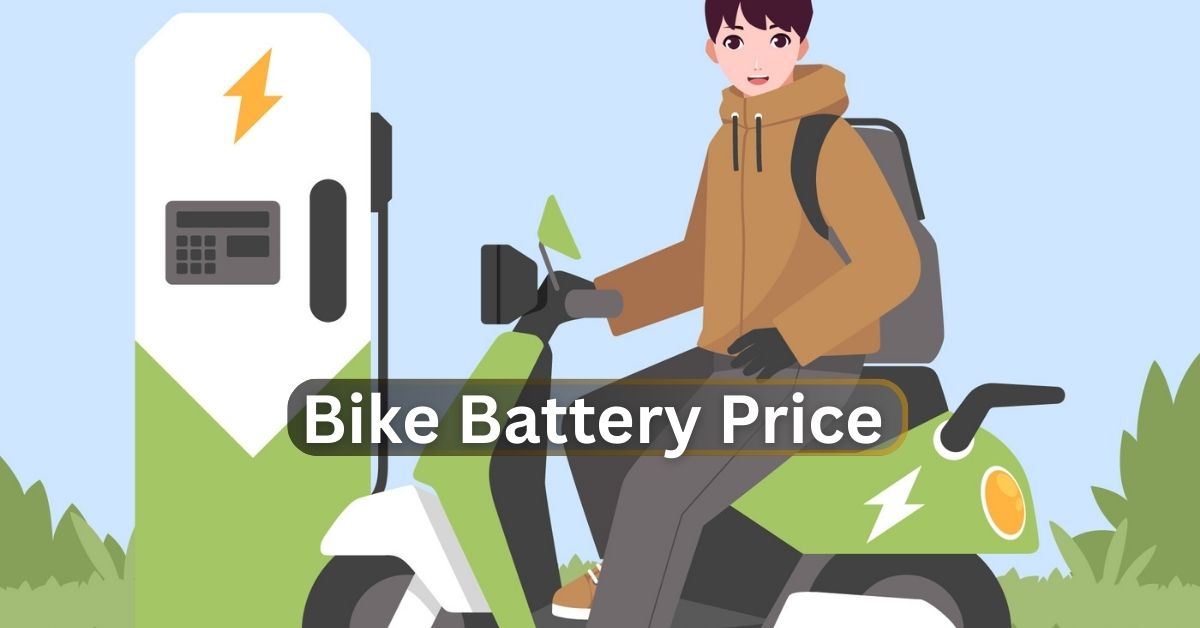Whether you’re cruising the city streets on an electric scooter or revving a powerful two-wheeler, your bike’s battery is its heartbeat. In 2025, with the rising popularity of electric vehicles and more tech-driven motorcycles, bike battery prices have become a hot topic. If you’re in the market for a new battery or simply researching your options, understanding what affects the bike battery price can save you money—and headaches.
In this post, we’ll dive deep into what determines the cost of bike batteries, the different types available, average price ranges, where to buy, how to maintain them, and more. Let’s power up!
Types of Bike Batteries
Before we jump into pricing, it’s important to know the types of bike batteries commonly used:
1. Lead-Acid Batteries
These are the traditional batteries found in many petrol-powered two-wheelers. They’re affordable and easy to replace but heavier and less durable.
-
Pros: Low cost, widely available
-
Cons: Heavier, shorter life span
2. Lithium-Ion Batteries
Used mostly in electric bikes and scooters, these are more lightweight, compact, and longer-lasting.
-
Pros: Long life, fast charging, lighter
-
Cons: More expensive upfront
3. Gel Batteries
A type of lead-acid battery that uses a gel electrolyte instead of liquid, offering more durability and safety.
-
Pros: Better resistance to vibration and weather
-
Cons: Higher cost than standard lead-acid
4. Nickel-Metal Hydride (NiMH) Batteries
Less common but still used in some hybrid and older models of electric two-wheelers.
-
Pros: Eco-friendlier than lead-acid
-
Cons: Rare, can be pricey
What Determines Bike Battery Price?
The price of a bike battery isn’t just about the type. Several key factors influence the cost:
1. Battery Type and Capacity
Lithium-ion batteries with high ampere-hour (Ah) ratings will cost more. For example, a 12Ah battery will be cheaper than a 30Ah battery.
2. Brand
Brands like Amaron, Exide, Tata Green, Bosch, and Okaya may cost more, but often offer better warranty and performance.
3. Voltage
Most bikes use 12V batteries, but the capacity (Ah) matters. Electric scooters may use 48V or 60V systems, which are priced higher.
4. Warranty and Life Expectancy
Batteries with longer warranties and life cycles (e.g., 3-5 years) usually cost more upfront but are cost-effective in the long run.
5. Usage – Petrol vs. Electric
Petrol bikes use standard lead-acid batteries, usually in the ₹800 – ₹2,000 range, while electric bikes with lithium-ion batteries can cost anywhere from ₹5,000 to ₹50,000 depending on the specs.
Average Bike Battery Price in India (2025)
| Battery Type | Price Range (INR) | Common Use |
|---|---|---|
| Lead-Acid (12V 5Ah) | ₹800 – ₹1,800 | Regular petrol bikes |
| Gel Battery (12V) | ₹1,500 – ₹3,000 | Premium petrol bikes |
| Lithium-Ion (48V 20Ah) | ₹10,000 – ₹25,000 | Electric scooters |
| Lithium-Ion (60V 30Ah) | ₹25,000 – ₹45,000 | Electric motorbikes |
| NiMH Battery | ₹7,000 – ₹15,000 | Older hybrid scooters |
Where to Buy Bike Batteries?
1. Authorized Dealers
If you’re looking for brand-specific batteries like Amaron or Exide, it’s best to buy from their authorized dealers.
2. Online Marketplaces
Websites like Amazon, Flipkart, BatteryBhai, and industry-specific platforms often offer good deals with installation services.
3. Local Mechanics & Workshops
A great option for lead-acid batteries. Many also offer exchange offers for your old battery.
Tip: Always check for warranty, manufacturing date, and installation charges when purchasing a battery.
How to Increase Your Bike Battery Life?
Investing in a battery is one thing—maintaining it properly is another. Here are a few tips to make your battery last longer:
-
Regular Charging (for Electric Bikes) – Avoid deep discharges.
-
Avoid Overcharging – Use smart chargers when possible.
-
Keep Terminals Clean – Especially important in lead-acid batteries.
-
Check Voltage Regularly – A healthy battery should read around 12.6V when fully charged.
-
Protect from Extreme Weather – Both heat and cold affect performance.
When Should You Replace Your Bike Battery?
Watch for these signs:
-
Dim headlights or flickering dashboard lights
-
Bike doesn’t start or has trouble cranking
-
Battery older than 3-4 years
-
Swelling or leakage in battery body
If you’re facing any of these, it’s time to check the battery with a mechanic or get a voltmeter reading.
Frequently Asked Questions (FAQ)
Q1: How long does a bike battery last?
A: Lead-acid batteries typically last 2–3 years, while lithium-ion batteries can last 3–5 years with proper care.
Q2: Can I replace my petrol bike battery with a lithium-ion battery?
A: Not directly. Petrol bikes are designed for lead-acid batteries. Lithium-ion conversions are not recommended unless professionally modified.
Q3: Does battery capacity affect bike performance?
A: For electric bikes—absolutely. Higher Ah means better range. For petrol bikes, the battery mainly affects starting and lights.
Q4: Can I charge my e-bike battery at home?
A: Yes. Most e-bike batteries come with portable chargers compatible with home sockets.
Q5: Are there any government subsidies on e-bike batteries?
A: While not directly on batteries, many EV purchase schemes (like FAME II in India) reduce the overall cost of EVs, which includes the battery.
Conclusion
The right battery can significantly improve your bike’s performance and lifespan—whether it’s a traditional petrol model or a modern electric scooter. With the variety of battery options available in 2025, understanding the bike battery price landscape helps you make an informed, budget-friendly decision.
Always prioritize quality, warranty, and compatibility over just price. Remember, a good battery isn’t an expense—it’s an investment in reliable rides.

